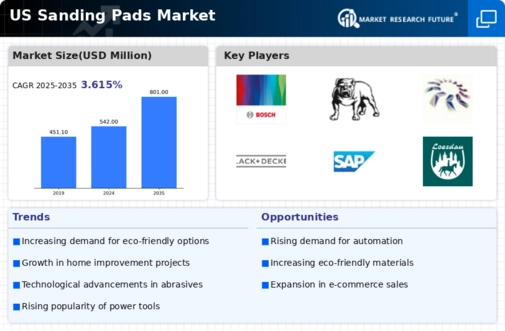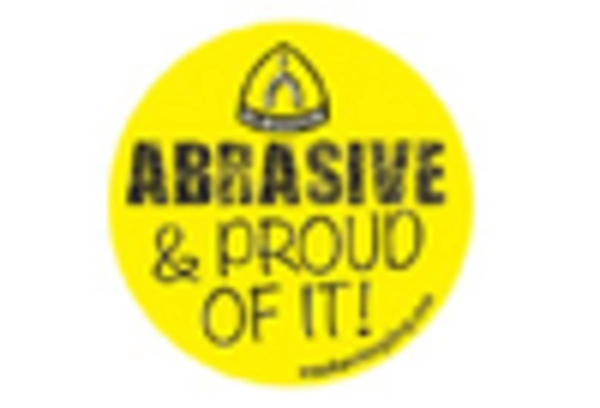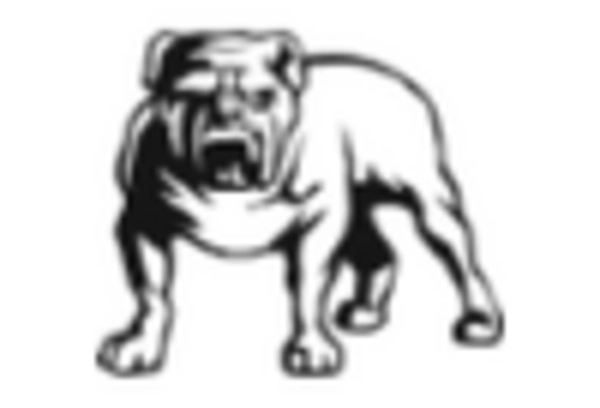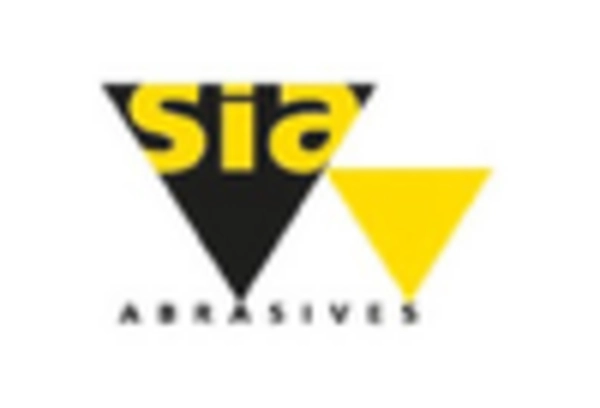Increased DIY Activities
The trend of do-it-yourself (DIY) projects among homeowners in the US is gaining traction, which may positively influence the sanding pads market. As more individuals engage in home improvement and renovation projects, the demand for sanding pads is likely to rise. Data suggests that the DIY home improvement market has seen a growth rate of around 7% annually, indicating a robust interest in personalizing living spaces. This surge in DIY activities creates a substantial opportunity for the sanding pads market, as consumers seek user-friendly and effective sanding solutions for their projects. Retailers are responding by expanding their product offerings, further driving market growth.
Growth of Automotive Sector
The automotive sector in the US is witnessing a robust expansion, which appears to be a crucial driver for the sanding pads market. As vehicle production ramps up, the demand for high-quality finishing tools, including sanding pads, is likely to increase. The automotive industry is projected to grow at a CAGR of approximately 4% in the coming years, driven by innovations in electric vehicles and advanced manufacturing techniques. This growth creates a substantial opportunity for the sanding pads market, as manufacturers require reliable products for surface preparation and finishing in vehicle assembly and repair processes. The alignment of these two sectors could lead to increased sales and product development.
Rising Demand in Construction Sector
The construction sector in the US is experiencing a notable resurgence, which appears to be a significant driver for the sanding pads market. As infrastructure projects and residential developments gain momentum, the need for high-quality finishing tools, including sanding pads, is likely to increase. According to recent data, the construction industry is projected to grow at a CAGR of approximately 5% over the next few years. This growth is expected to elevate the demand for sanding pads, as contractors and builders seek efficient solutions for surface preparation and finishing. The sanding pads market is poised to benefit from this trend, as professionals require reliable and durable products to meet the rising standards of construction quality.
Technological Innovations in Abrasives
Technological advancements in abrasive materials are emerging as a key driver for the sanding pads market. Innovations such as the development of advanced synthetic materials and improved bonding agents enhance the performance and durability of sanding pads. These advancements not only increase efficiency but also reduce the time required for sanding tasks. The sanding pads market is likely to see a shift towards these high-performance products, as professionals and DIY enthusiasts alike seek superior results. Furthermore, the introduction of specialized sanding pads designed for specific applications, such as automotive refinishing or woodworking, could further stimulate market growth, appealing to a broader range of consumers.
Regulatory Standards and Quality Control
The implementation of stringent regulatory standards in various industries, including construction and automotive, is influencing the sanding pads market. Compliance with these regulations necessitates the use of high-quality materials and tools, which may drive demand for premium sanding pads. The sanding pads market is likely to benefit from this trend, as manufacturers focus on producing products that meet or exceed regulatory requirements. Additionally, the emphasis on quality control in production processes may lead to innovations in sanding pad design and materials, further enhancing market competitiveness. As industries strive for compliance, the demand for reliable and effective sanding solutions is expected to rise.

















Leave a Comment